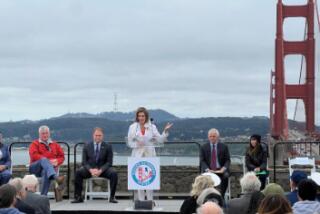Border fence to be tested after glitches
- Share via
TUCSON — The first section of a high-tech “virtual fence” along the U.S.-Mexico border will be tested this month after defense contractor Boeing Co. reported it solved most of the computer glitches that have delayed the program for months, a federal official said Wednesday.
Boeing personnel who briefed federal officials “sounded real optimistic” about the fixes, said Brad Benson, a Customs and Border Protection spokesman in Washington. “I have talked to Border Patrol personnel, and they weren’t quite that optimistic.”
Loaded with sensors, radar and sophisticated cameras, nine towers along a 28-mile section are designed to detect illegal immigrants and drug smugglers coming through the heavily trafficked area southwest of Tucson.
The $20-million virtual-fence pilot project remains on hold because software designed to integrate the results of sensor hits, radar readings and camera sightings wasn’t working correctly. A programming glitch has kept it from providing a common operating picture for agents, who plan to use it to spot and capture illegal immigrants and drug smugglers.
Because of that, Homeland Security Secretary Michael Chertoff told a congressional committee last month that he would withhold further payment to Boeing, the prime contractor, and declined to accept the system until he was satisfied.
That testing is now set for the last week in October, Benson said. Boeing did not return calls to the Associated Press seeking comment.
The virtual fence is being tested first in Arizona, the focal point for illegal crossings into the United States from Mexico. Plans call for installing 1,800 such towers along the Mexican and Canadian borders.
More to Read
Sign up for Essential California
The most important California stories and recommendations in your inbox every morning.
You may occasionally receive promotional content from the Los Angeles Times.













